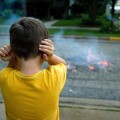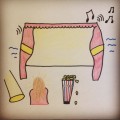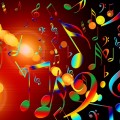Do you know this feeling? You listen to music or certain sounds, and suddenly there is this tingling n the back of your head, a soft shiver running down your back, or a stimulating sensation coursing through your body. Maybe you have witnessed this before, the tingling sensation that is by now known as ASMR – Autonomous Sensory Meridian Response.

These feelings certain auditory, visual, or other cues trigger in a human’s body aren’t a new phenomenon, yet the term (or rather neologism) ASMR is. The name was created throughout discussion groups on the internet where people that have witnessed and felt the very same reactions to music or pictures came together to share anecdotes and experiences.
What is ASMR, what do scientists say about it, and how can you (re)create such a feeling – this article aims on providing you some answers.
What is ASMR?
People that have experienced what is now widely known as ASMR also describe the feeling they get while listening to certain sounds of tone sequences, or while looking at a certain picture or color scheme, as “head tingling”, “brain massages”, or even “brain orgasms” – even though the sexual relation should be banished from your thoughts right away. Nevertheless, the reactions drawn from the body from certain stimuli are over all described as joyous and very positive.
Scientific evidence
While several people on the web claim to have or experience ASMR, the scientific evidence is rather slim. Yet, despite the lack and despite the almost cult-like following of the phenomenon, no further testing using methods like FMRI (Functional Magnetic Resonance Imaging) or TMS (Transcranial Magnetic Stimulation) have been applied to give scientific evidence that there is a different brain activity going on in people that do experience ASMR in contrast to people that do not experience ASMR.
Overall, scientists agree that it’s a very difficult topic to do research on. There are several obstacles a truly scientific research on ASMR would have to overcome. Not all people are capable of experiencing ASMR. Furthermore, there is often times not a single stimulus only that triggers those sensations to occur, and they differ from one ASMR perceptive person to the other.
Thus, there is no scientific evidence on the benefits or harms of Autonomous Sensory Meridian Response. The only source of information are the telling and stories of people that experienced ASMR themselves. Yet, there are supporters of ASMR in the field of psychology that claim that the reactions are similar to meditation and help to ease stress and anxiety.
Different kind of stimuli
When searching for ASMR stimuli, one thing above all else pops up: whispers. Something in the way humans whisper seems to directly speak to people that are able to experience ASMR, causing them to feel the tingling and pleasurable sensations.
Other ASMR perceptive people claim that recordings for the purpose of guided imagery, hypnosis, or meditation have the same effect, causing the knowing tingling in head, back, scalp or elsewhere while relieving stress, panic attacks, or even insomnia.
The following different kinds of auditory stimuli are known to trigger ASMR according to those people that are able to feel it.
Voices and Whispering
Soft and soothing voices, even and measured spoken tones, whispers close to either a microphone or ear, and even foreign accents are known to create a tingling feeling in the scalp or back of an ASMR perceptive person, alongside with bringing comfort when feeling alone or anxious.
The spoken words do not have to “make sense” to the listener. Even the sounds of lip smacking or general mouth noises can serve the purpose of triggering a tingling sensation.
Tapping and Rustling
Tapping sounds of fingers on wood or water dripping into a bowl or wink can also be used as ASMR stimuli. As do rustling sounds created by paper, bed sheets, leaves, or the sound of crinkling paper or fabric.
The sound of being in a forest while the wind blows through the trees, birds chirping and fluttering, or some relaxing music mixed up with the rustling of bed sheets and ocean waves are good stimuli for easing anxiety and focusing on relaxing your body and mind.
White Noise
A very common kind of auditory stimulus is white noise. Used for sleep masking, as background sounds while working or studying, or to treat Tinnitus, white noise can function to trigger ASMR as well.
Create your own!
Yet, again one can not stress this enough, not everyone is able to experience the tingling sensation of ASMR. And even for those people that do, the stimuli may and do differ. Creating your own mix or using an ASMR template suggestion with different auditory triggers like lip smacking, whispers, water drops, or rustling leaves can help you experience this feeling!




